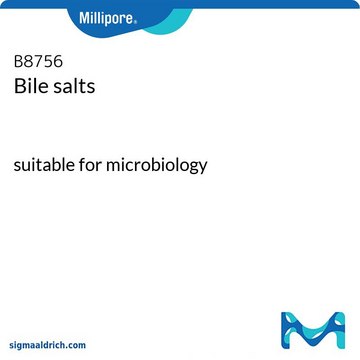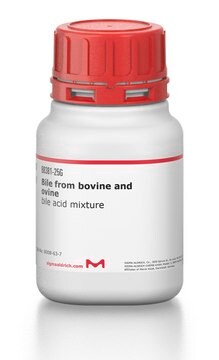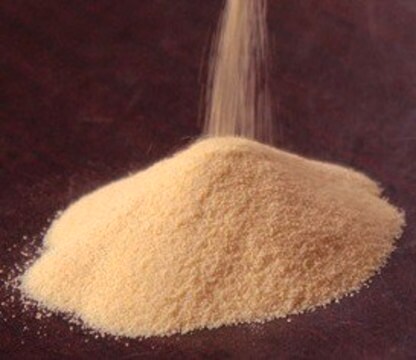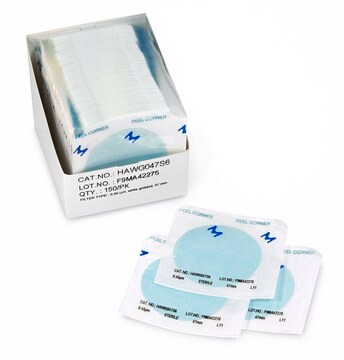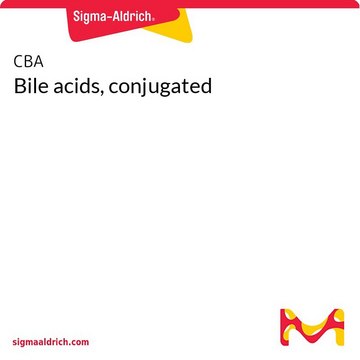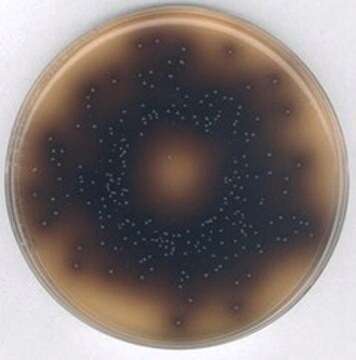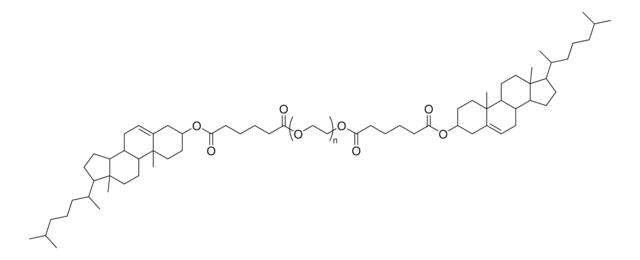70168
Ox-bile, dehydrated, purified
suitable for microbiology, extracted under controlled conditions from purified fresh bile
Synonym(s):
Bile acids sodium salt, cholic acid-deoxycholic acid sodium salt mixture
About This Item
Recommended Products
Quality Level
sterility
non-sterile
form
powder
impurities
~5% sodium chloride
ign. residue
≤22% (as SO4)
loss
≤8% loss on drying
pH
6.0-9.2 (2% in H2O)
solubility
distilled water: freely soluble
application(s)
microbiology
Related Categories
General description
Application
Storage Class
11 - Combustible Solids
wgk_germany
WGK 3
flash_point_f
Not applicable
flash_point_c
Not applicable
ppe
Eyeshields, Gloves, type N95 (US)
Choose from one of the most recent versions:
Already Own This Product?
Find documentation for the products that you have recently purchased in the Document Library.
Customers Also Viewed
Articles
Culture media provides a habitat with suitable nutrients, energy sources, and certain environmental conditions for the growth of microorganisms. The components of the culture media range from simple sugars to peptones, salts, antibiotics, and complex indicators.
Our team of scientists has experience in all areas of research including Life Science, Material Science, Chemical Synthesis, Chromatography, Analytical and many others.
Contact Technical Service